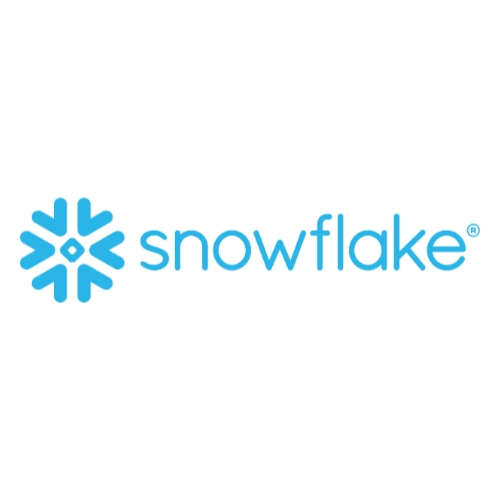The growing needs of small businesses are intimately tied to technological advancements and shifts in consumer behavior. Banks are recognizing these changes and beginning to tailor business banking solutions to meet these emerging requirements. I’d suggest that banks embrace these needs with the following six tools.
Machine Learning and AI
Small businesses are seeking more efficient and data-driven solutions. Banks can leverage AI and machine learning to analyze financial data, assess credit risk and offer personalized financial products. This technology can help in predicting cash flow, identifying trends and suggesting strategies for growth.
JPMorgan Chase, Bank of America, Wells Fargo and most other sizable institutions are leveraging AI and machine learning to enhance their banking services. JPMorgan implemented blockchain and AI in their COIN platform to improve their analysis of legal documents driving higher efficiency and accuracy with less manpower. Translation – saving money!
APIs and Open Banking
Open banking enables third-party financial service providers to access consumer banking, transaction and other financial data through APIs. Banks should leverage this approach to offer small businesses access to a broader range of financial services and tools. For instance, connecting accounting software directly to bank accounts or enabling easy access to loans through third-party platforms. Only the largest of banks have the capacity to build and tailor to their specific needs. Small to mid-size banks can gain market advantage more quickly when integrating these third-party solutions. Of course, with smaller to mid-size banks, having a clear objective and the specific advantage to be gained is critical when investing time and budget.
Citibank, JP Morgan Chase and Capital One are implementing open banking and API solutions to address improvements in Account Information Services (AIS), Payment Initiation Services (PIS), Fund Confirmation Services (FCS), Authentication Services and Identity Verification Services simplifying their customers’ adoption of these improved capabilities and deepening the business relationship.
AI-Powered Financial Guidance
Offering personalized financial guidance is crucial for small businesses and their relationship with the bank. AI-powered tools can drive analysis and recommendations concerning the company’s financial situation and provide personalized recommendations for investments, cost-savings measures and/or suitable financial products based on their specific needs and goals.
Again, the top institutions are delivering or building capabilities to address cash flow forecasting, expense management, working capital optimization, financial health assessments and personalized budgeting to assist small businesses expanding their relationship toward the trusted-financial-advisor, with the solutions to back it up. Bank of America’s AI-driven virtual assistant, Erica, helps small business owners with personalized financial guidance. Erica offers proactive insights, such as identifying opportunities to save money or providing reminders about upcoming financial commitments.
Financial Cash Management Tools
Many small businesses struggle with budgeting and continual forecasting since they are hyper-focused on their operations to sell product/services, deliver/implement the product/services, bill/invoice, and collect monies owed. Their competency is not traditional financial cash management operations. Banks can or will develop or implement cash management tools, with the small business, that integrate business accounts, provide real-time insights and recommendations, assist their forecasting and help to identify opportunity areas for cost-optimization. These tools empower businesses to make informed decisions with their banking account relationship manager.
Wells Fargo offers a range of cash management tools designed for small businesses. Their CEO Mobile service allows business owners to manage their finances on the go, providing real-time insights and the ability to make critical financial decisions anywhere, anytime. And BankiFI is a new example of a FinTech focused on the specific issues facing small business owners.
Digital and Contactless Payments
Consumers continue to drive toward their preferred digital payment method with a strong bent toward contactless payments, when supported by the card issuer and small business’s point-of-sale solution. While consumer behavior has moved away from checks and cash, some small businesses may still prefer cash rather than pay the card transaction fees. Banks must offer secure and frictionless payment solutions for small businesses. Providing various options like mobile wallets, online payment gateways and NFC-enabled cards can enhance convenience and efficiency in transactions.
Square, a bespoke FinTech/POS platform, has revolutionized digital and contactless payments for small businesses. Their payment processing tools and hardware have enabled countless small businesses to accept credit cards and NFC payments easily and are driving into royalty programs to bring more advantage to small businesses in all of their customer touches.
CRM and Marketing Tools
Growing a small business and knowing who their customers are or might be, may not be a critical focus for the company. Banks are doing more to help small businesses in harnessing who their customers are and who might be their next. Most small businesses are reliant on repeat customers but expanding their market audience will always rank very high in growth strategies.
Banks can offer CRM tools that integrate with financial data, providing insights into customer purchasing behavior, credit history and other relevant information. This integration can enable businesses to tailor their services and offerings more effectively. Coupled with guidance from the bank’s relationship manager, the relationship blooms continuously.
Goldman Sachs, through their acquisition of United Capital, now rebranded as Goldman Sachs Personal Financial Management, has expanded its reach in providing CRM and financial planning tools, which can benefit small businesses in managing customer relationships and financial strategies.
By looking to larger institutions who are leading the charge with new technologies, small and mid-size banks can better cater to the evolving needs of small businesses more cost effectively than in the past. Now, they can offer solutions that drive growth and success while providing a seamless and convenient banking experience. The priority for banks, as always with small businesses, is to secure the relationship and then pivot into the financial advisor role which supports the growth of their banking relationship.

Snowflake Summit 2025 Announcements
Snowflake Summit 2025’s latest announcements made it clear: the path to genuine AI-driven impact hinges on frictionless access to data, the ability to act on it with clarity, and absolute confidence in its protection. Learn more about how they're making that happen for customers in this article.

How ChatPRD Helps Build Better Stories (and a Stronger Team)
When user stories are vague, it slows down delivery, trust, and momentum. This article by Senior Product Strategy Consultant Traci Metzger shows how she used a lightweight, AI-guided system (ChatPRD) to write clearer, developer-ready requirements that actually accelerated execution.

QA in the Age of AI: The Rise of AI-Powered Quality Intelligence
As organizations push code to production faster, respond rapidly to new customer needs and build adaptive systems, the expectations on quality have changed. It's no longer enough to simply catch bugs at the end of the cycle. We’re entering an era where quality engineering must evolve into quality intelligence and organizations adopting quality intelligence practices are reporting measurable gains across key delivery metrics. Learn more in this article by Principal Engineer Jarius Hayes.

Operational Efficiency in the AI Era: What Matters and What Works
Ever wonder how leading teams are cutting costs without cutting corners? Hint: it starts with AI. In this article by Principal Delivery Manager Kabir Chugh, learn how AI is powering smarter ops, faster deployments, and measurable savings across industries.
